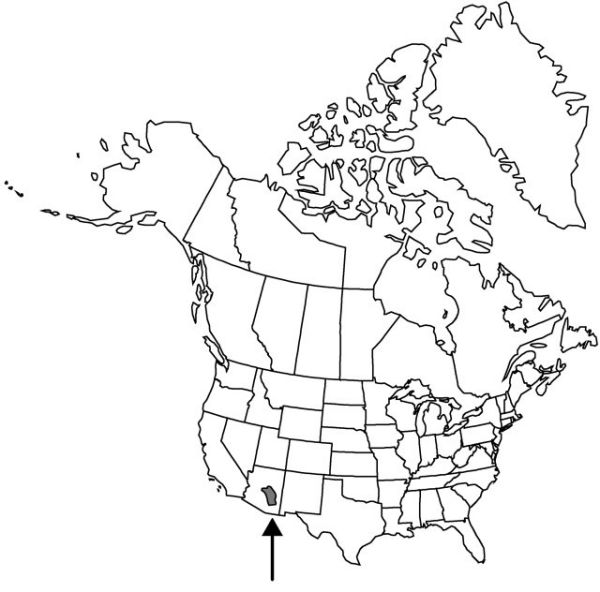Agave chrysantha
Proc. Biol. Soc. Wash. 48: 139. 1935.
Plants acaulescent, occasionally suckering; rosettes solitary or infrequently cespitose, 0.5–1.2 × 0.8–1 dm, rather open to somewhat dense. Leaves spreading to ascending, 40–75(–82) × (4–)8–10(–11) cm; blade pale to glaucous or yellowish green to green, not cross-zoned, linear-lanceolate to lanceolate, rigid, adaxially deeply guttered, abaxially convex; margins undulate to wavy, armed, teeth single, well defined, 4–10 mm, (0.8–)1–3(–4) cm apart, interstitial teeth (0–)1–3(–5), mostly along distal 2/3 of margins; apical spine reddish brown or brown to gray, acicular, 2.5–4.5 cm. Scape 4–7 m. Inflorescences narrowly to broadly paniculate, open, not bulbiferous; bracts persistent, triangular, 1–5 cm; lateral branches (6–)8–18, slightly ascending, comprising distal 1/4–1/3 of inflorescence, longer than 10 cm. Flowers 12–21 per cluster, erect, 3.5–6.5(–6.7) cm; perianth golden yellow, tube not shallow, campanulate, 6–18 × (7–)10–21(–26) mm, limb lobes erect persistent and often leathery during and after anthesis, strongly unequal, (6–)9–15(–18) mm; stamens long-exserted; filaments inserted at 2 levels ca. mid perianth tube, erect, pale yellow, (3.2–)3.5–5 cm; anthers yellow, 7–20 mm; ovary (1.4–)2.2–3(–3.3) cm, neck slightly constricted, (0.5–)4–6(–8) mm. Capsules sessile or short-pedicellate, narrowly oblong to obovoid, 3.5–5 cm, apex short-beaked. Seeds 6–7 mm. 2n = 60.
Phenology: Flowering late spring–summer.
Habitat: Sandy to gravelly places on granitic or volcanic soils in desert scrub, grasslands, pinyon-juniper, and oak woodlands
Elevation: 700–2100 m
Discussion
Agave chrysantha hybridizes with A. murpheyi, A. palmeri, A. parryi var. couesii, and A. delamateri.
Selected References
None.
